If you’re seeking a brief history of Florence to prepare for your visit, look no further. Known as the Cradle of the Renaissance, Florence is a captivating city that left an indelible mark on art, culture, and politics.
With its rich history spanning nearly 3,000 years, Florence traces its origins back to 59 B.C. as a Roman settlement. Throughout the Roman, Byzantine, Medieval, and Renaissance periods, Florence thrived and flourished.
In 1425, Florence emerged as an independent city-state, becoming a birthplace of the modern world. Its cultural legacy places it among the most refined cities in Europe, attracting art enthusiasts from far and wide.
As you explore Florence, you’ll be immersed in a city that has witnessed remarkable transformations and played a pivotal role in shaping the course of history. Prepare to be enchanted by its artistic treasures and the sophisticated ambiance that lingers in its streets.
A Short History of Florence
1. Roman Era
In 59 B.C., the Roman general Julius Caesar took his legions across the Alps into Gaul capturing territory.
With grants of land from Caesar, many of his soldiers settled in Florence. Rome named its new city Florentia, which translates to the Flowering City. Rome needed cities like Florentia to govern its far flung empire and the people they had conquered.
Rome liked to make its territorial colonies into mini-Romes, with the same type of architecture and culture. Few indicia of a Roman presence survive in Florence today. But there are several traces.
READ: History of Ancient Rome
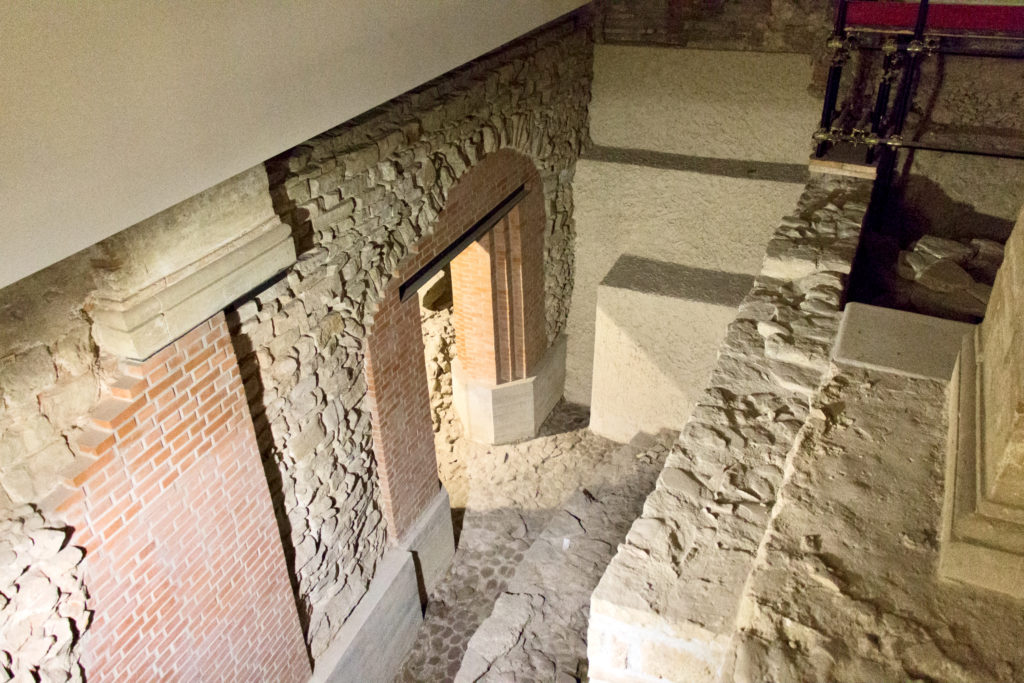
On Via Bentaccordi near the Basilica of Santa Croce, you can see a curved road. This was where an ancient Roman amphitheater, modeled after the Colosseum, was located.
Palazzo Vecchio was once an ancient Roman theater. The remains are still visible under the city hall. There were many bath complexes in Florence as well, the ruins of which are under the Torre della Pagliazza. An 18 mile long aqueduct provided the water.
There was even an ancient Roman forum in Florence. It was located in the Piazza della Republicca. The square was the site of the most important temple in Florence. It was dedicated to Jupiter and copied from a temple on Capitoline Hill in Rome.
Today, a freestanding column in Piazza della Repubblica marks the center of ancient Florentia. On top is a 16th century statue. This replaced an ancient Roman statue of Dovitzia, the Roman goddess of abundance.
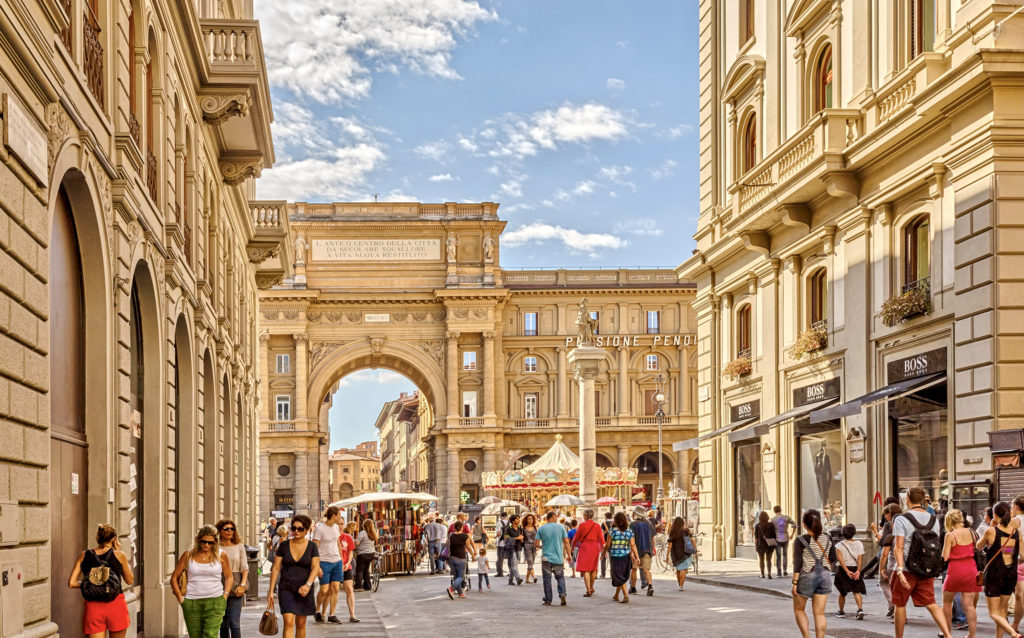
Under Roman rule, Florentia prospered. Emperor Hadrian enlarged the city. By the 3rd century, Florentia was a successful commercial center.
But Florentia’s fate was tied to the fate of Rome. The empire fell in the 5th century. When that happened, people living in the Roman colonies abandoned them to avoid the barbarian invasions.
The city of Florentia fell in ruin and disrepair. It was that way for 500 years.
2. Early Middle Ages
The period after the fall of the Roman Empire was initially referred to as the Dark Ages. Nowadays, this period of history is called the Early Middle Ages.
The person responsible for bringing Europe out of the dark ages was Charlemagne. He was a fierce warrior, but also encouraged culture and education. Some historians consider Charlemagne the first Renaissance man.
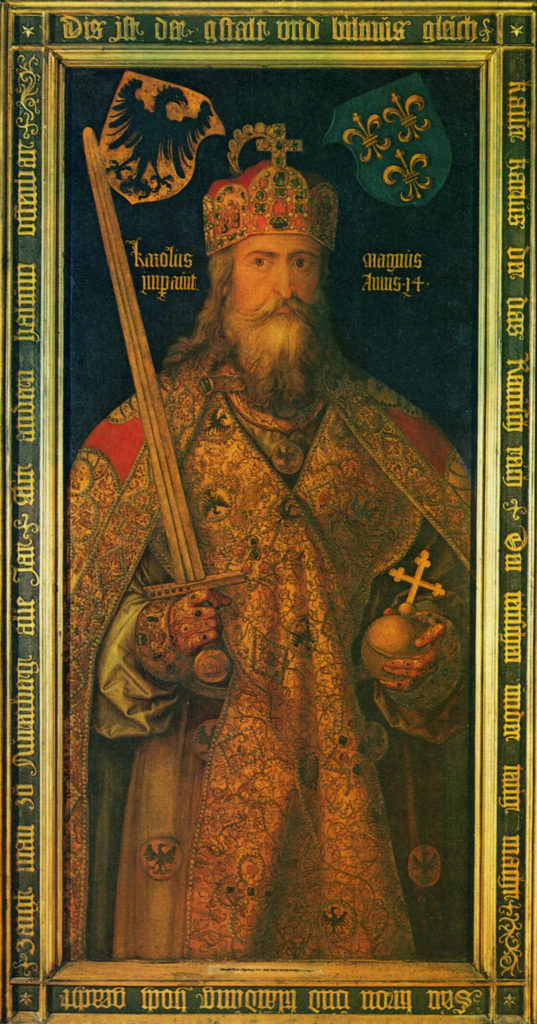
Charlemagne became Holy Roman Emperor in the 9th century. He was intended to be a secular ruler. But the pope still hoped that Charlemagne would be subservient to his divine authority.
Charlemagne implemented a system called feudalism. Under this form of government, the king owned all the land and granted fiefs to the nobles.
The aristocrats ruled these fiefdoms, serving the king. The higher your noble rank, the more land you owned. Serfs tilled the land and harvested crops for the nobles.
It was an unequal political system. But the serfs benefited by gaining some measure of security from the nobles.
It became safer to travel and people migrated back into the cities. This meant an uptick in trade. This development, in turn, meant that the serfs could throw off the proverbial yoke and become merchants. A commercial revolution began.
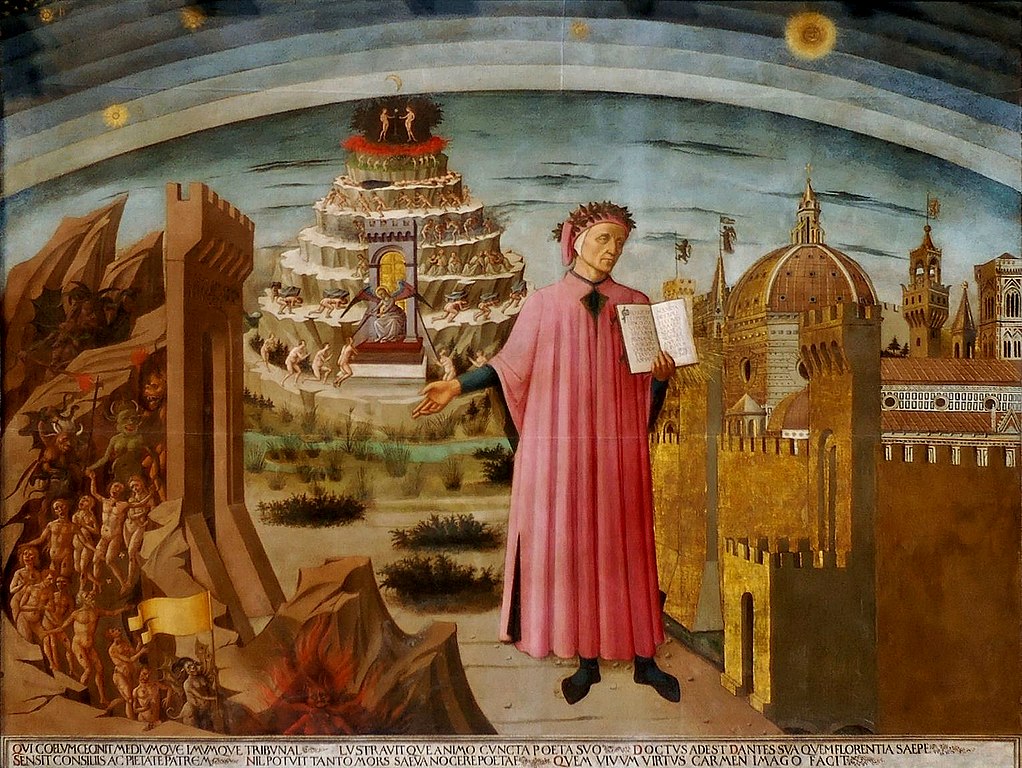
3. Middle Ages
In the 12th and 13th centuries, urban centers were reborn. However, trade and increased wealth gave rise to a divisive political conflict between the wealthy merchants (Guelfs) and the land owning nobles (Gibellines). The merchants wanted more power.
The Holy Roman Emperor backed the nobles. The pope backed the merchants, trying to claw back power. This dispute evolved into a full scale military conflict, throughout much of Europe.
In 1267, in the Battle of Swabia in southern Italy, the merchants’ army routed the nobles’ army. The Holy Roman Emperor died on the battlefield. Without an emperor, there was a power vacuum.
This vacuum gave rise to independent city-states in Italy. They were democracies ruled by the merchants. Florence emerged as one of the most powerful city states. It owed its wealth mostly to textiles and later to banking.
Florence put power into the hands of a city council, or signorina. The council consisted of 9 city counselors that came from the trade guilds. The guilds were a confraternity of merchants with similar trades.
The council was elected into office and their term lasted only 2 months. It was an inefficient way to govern. But it meant that power was never concentrated in one person’s hands.
Florentines were proud of their system of government. The city saw itself as the ideal city state, a place where the individual freedom was guaranteed and where many citizens participated in government.
The newly-established council began a flurry of building projects. The first thing it did was commission new walls to wrap around the city. They’re long gone now, except for a scrap on the southern end.
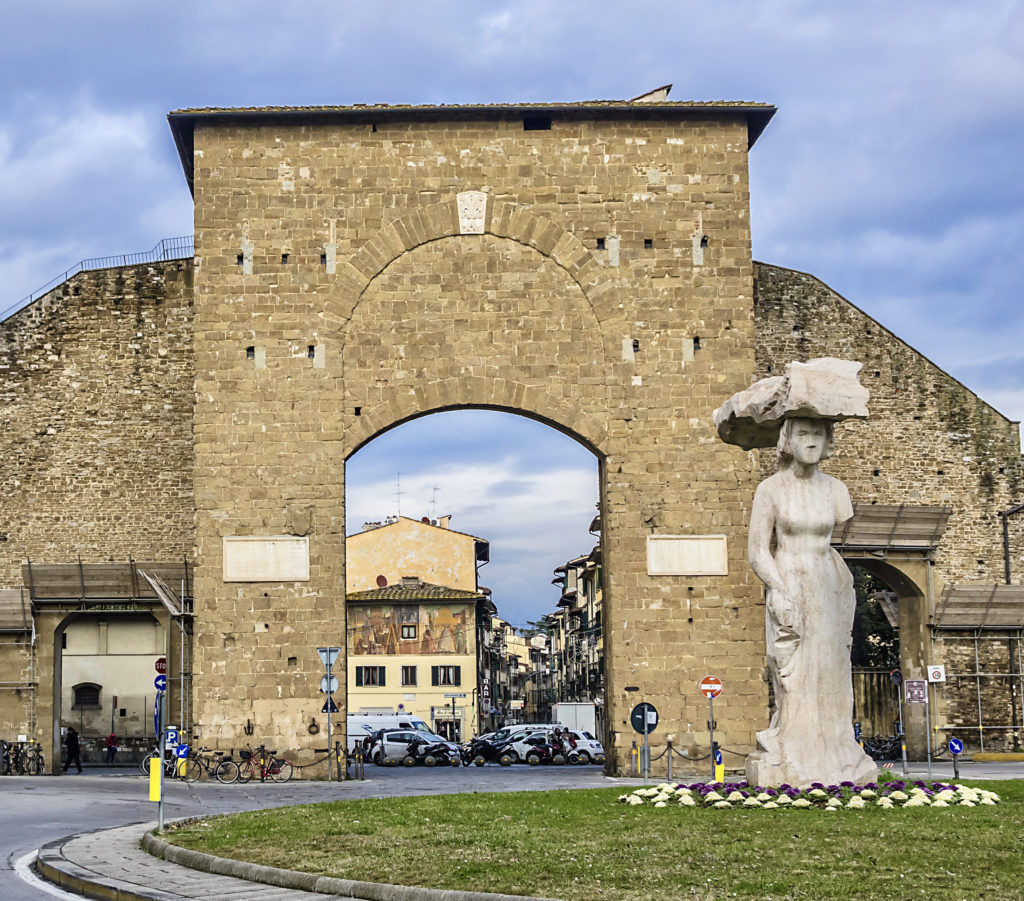
The council also chopped down the city’s house-towers (like the ones you see today in San Gimignano) to erase all traces of the nobility. They used the materials to build new monuments.
The next thing the council built was the Palazzo Vecchio, formerly known as the Palazzo Signorina.
In 1296, the city began their next big project, the building of Florence Cathedral, known as the Duomo. The architect was Arnolfo di Cambio, a man responsible for building much of 13th and 14th century Florence. At the time, there was no technology for creating a dome.
in the mid 14th century, the Black Death devastated Florence. Half the population died. The Duomo remained dome-less for a century.
It remained that way until the amateur architect Filippo Brunelleschi came along with a genius plan. Brunelleschi developed a “dome within in a dome” double shell concept that worked without wooden centering.
His magnificent terra cotta colored dome was built between 1420-36.
Financed by Cosimo the Elder, it catapulted the Medici name forward in Florentine society. (A wooden model of Brunelleschi’s dome is on display in the Duomo Museum.)
READ: Guide To The Duomo Museum
Brunelleschi, along with artists like Donatello, Lorenzo Ghiberti, Giotto, Masaccio, and Dante helped kick off the early Renaissance.
3. Early Renaissance
In fact, Florence is known as the Cradle of the Renaissance. It was here (and in Tuscany) that this incredible period of history began.
The Medici were were the most celebrated and powerful family of the Renaissance. Florence is synonymous with the Medici and the Medici are synonymous with Florence.
Who were the Medici? The Medici family didn’t originate in Florence. They came from the rural Mugello region of Tuscany, between Florence and Bologna.
The Medici were bankers by trade, benevolent despots by design, and cultural influencers. The family produced three popes, two queens, and many Florentine rulers.
The Medici were one of the longest lasting dynasties in history, ruling from the 13th to the 17th centuries. They had a reasonably patriotic take with respect to their great wealth and were huge patrons of the arts.
The Medici were also key players in geopolitics. Giovanni de Bicci de’ Medici was the first Medici of import. He initiated the Medici’s rise to power. Born in 1360, he essentially founded the Medici dynasty.
He was followed by Cosimo the Elder. Cosimo pulled an “Augustus” and became the de facto ruler of Florence, although he had no official title. He used his power discreetly to avoid antagonizing the populace.
READ: History of the Roman Emperors
4. Renaissance & Beyond
Lorenzo the Magnificent
The most powerful and famous Medici was Lorenzo the Magnificent. He essentially kicked off the golden age of the Renaissance, when Florentine arts were at its zenith.
Lorenzo’s palace was a lived in art gallery. At his humanist court, Lorenzo gathered together the leading artists, intellectuals, and philosophers of the day. Even Michelangelo lived at the Medici palace in his youth.
Lorenzo also had a passion for poetry. He was the most significant poet of his time in Florence, after his friend Poliziano.
Lorenzo commissioned much of Florence’s breathtaking Renaissance art and architecture — works by Brunelleschi, Leonardo da Vinci, Michelangelo, Botticelli, Donatello, and Fra Angelico. Much of that artistic legacy is on display in Florence’s best museums.
Pazzi Conspiracy
While Lorenzo had the support of the Florentine public, other families were jealous of the Medici’s power. In 1478, the Pazzi family tried, but failed, to oust the Medici in Florence’s most infamous coup attempt.
The Pazzi plotted to kill both Lorenzo and his brother Giuliano during high mass at the Duomo. Giuliano was murdered at the high altar. Lorenzo was wounded, but managed to escape by hiding in the Medici Chapel.
In just a few hours, the Pazzi conspirators (including the pope’s nephew) were captured and killed in a violent manner. They were hung from the second floor ramparts of the Palazzo Vecchio. Incensed, Pope Sixtus VI, who aided and abetted the plot, promptly excommunicated Lorenzo.
After Giuliano’s assassination. Sandro Botticelli was commissioned to paint a fresco of the hanged conspirators on a wall of the Loggia dei Lanzi in the Piazza della Signoria. The frescoes were later destroyed after the expulsion of the Medici in 1494.
Savonarola
The late 15th century witnessed the emergence of Savonarola. He was an austere Dominican friar whose fiery sermons predicted the end of the world.
Opinion about him varied greatly. Some hailed him as a prophet and others condemned him as a terrorist. Savonarola staunchly opposed the opulence of the Renaissance, yearning for a return to the Middle Ages.
He vehemently criticized the excessive power wielded by clergy and despots, urging Florentines to embrace piety and self-censorship to redeem themselves. In 1494, Charles VIII’s invasion of Italy and the subsequent threat to Tuscany seemed to validate Savonarola’s apocalyptic warnings.
Piero de’ Medici, son of Lorenzo the Magnificent, proved ineffective in countering the invasion, further stoking the resentment of the Florentine populace.
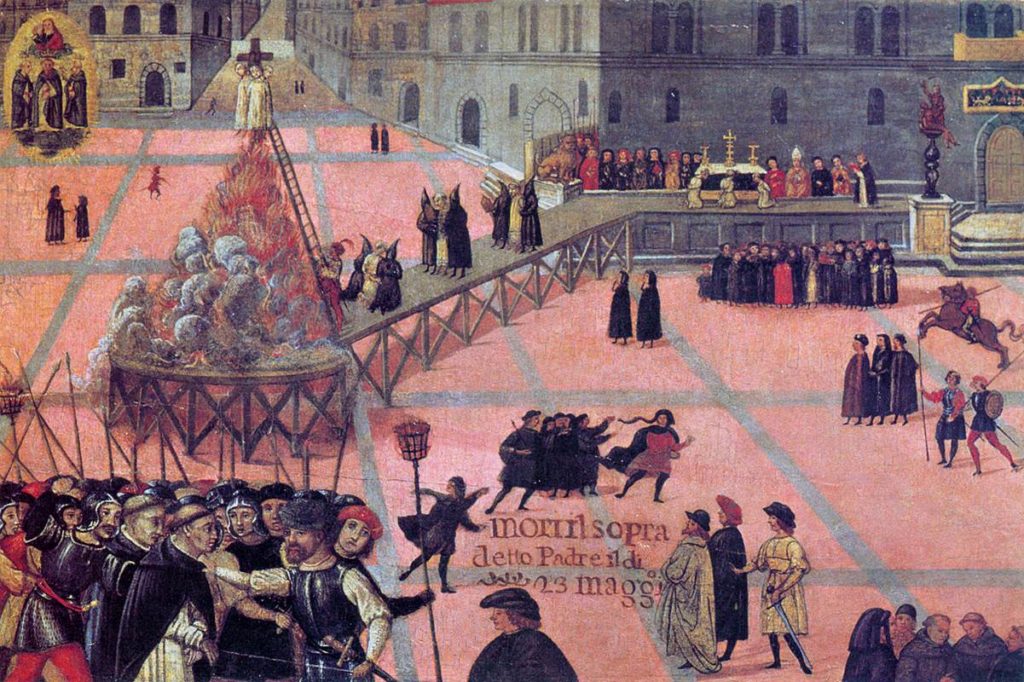
In 1494, Savonarola ousted and exiled Piero. For several years, Savonarola established a theocracy in Florence. But the extreme religious tyranny of Savonarola went too far.
In 1497, Savonarola hosted the “Bonfire of the Vanities,” in an attempt to expunge vice from Florence. He destroyed works of art and other “vanities” (wigs, perfume, cosmetics, tapestries, manuscripts, fine clothing) in the Piazza della Signoria.
A shell-shocked public complied with the bonfire. Even Botticelli reputedly threw his art works into the flames. But the event divided Florence. Not everyone was brainwashed by Savonarola.
Many of the pleasure-loving citizens had enough. They didn’t want their cultural legacy destroyed. When the plague arrived in Florence, that was the final blow.
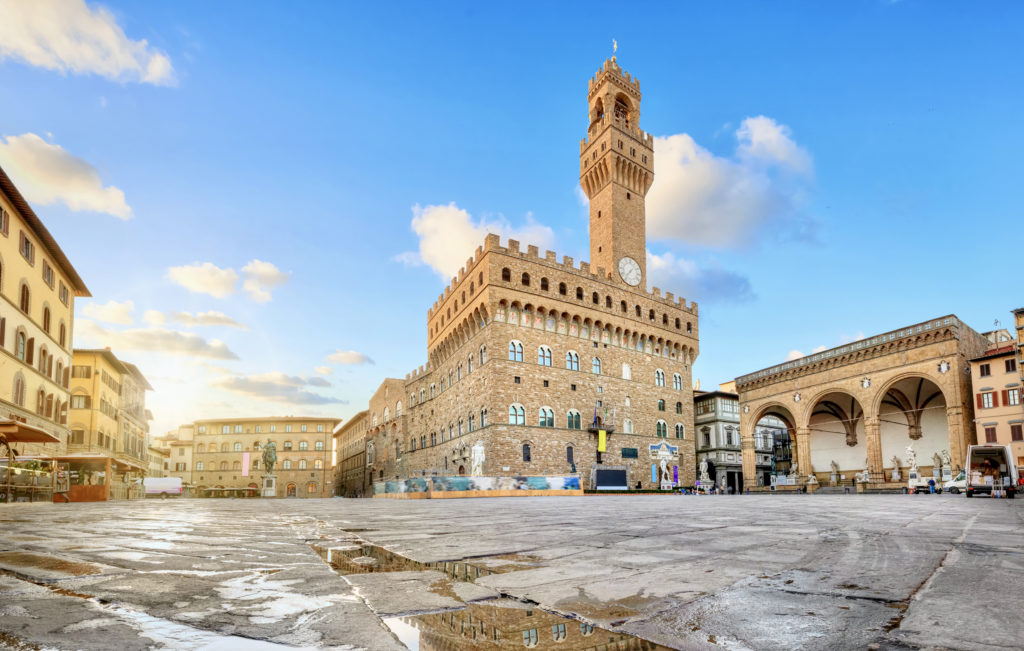
Savonarola was blamed and branded a lunatic. In 1492, Rodrigo Borgia was appointed Pope Alexander VI. (His rule was considered wildly corrupt. ) In 1498, the pope defrocked Savonarola.
He was imprisoned in the Palazzo Vecchio for heresy. After being tried and convicted, Savonarola was executed in the Piazza della Signoria. Today, there’s a paving stone that marks the spot of his execution.
After Savonarola, Florence enjoyed a brief period of republican rule. The city was led by Piero Soderini, the city chancellor, and his right hand man Niccolo Machiavelli.
Machiavelli is Florence’s best remembered author of the 16th century. His most famous work, The Prince, is a masterpiece of political analysis and statecraft.
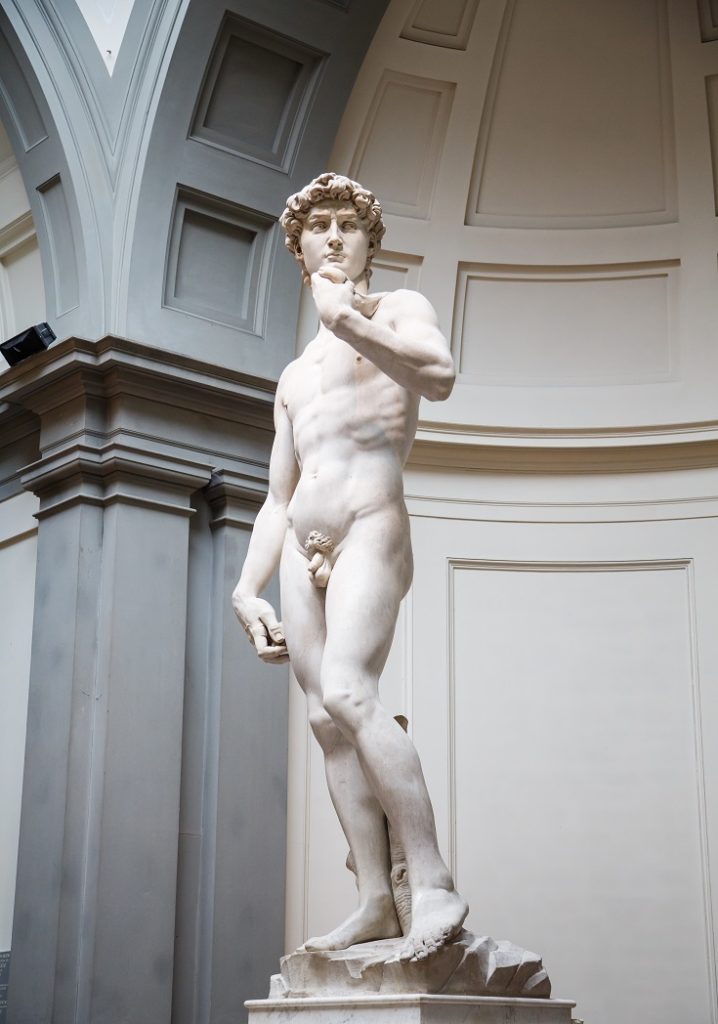
Soderini commissioned Michelangelo’s world famous David sculpture, which is housed in Florence’s Galleria dell’Accademia. Soderini also commissioned Michelangelo and Leonardo da Vinci to create battle frescos in the Palazzo Vecchio.
Michelangelo only got to the drawing stage before heading off to Rome to paint the Sistine Chapel in Vatican City. Leonardo’s fresco may still be hidden under frescos by Giorgio Vasari from the 16th century.
READ: Battle Of The Battle Frescos In Palazzo Vecchio
Return of the Medici
But the Medici rebounded. In 1513, Giovanni de Medici was elected pope and became Leo X. This restored the Medici family to Florence.
In 1531, the republic of Florence officially came to an end. Alessandro de’ Medici was established as the first Duke of Florence in 1531. Alessandro was a despotic ruler and was assassinated in 1537.
His far superior replacement was his cousin Cosimo I de’ Medici. He eventually became the first Grand Duke of Tuscany in 1569. Upon the creation of a duchy, Florence became a hereditary monarchy.
Cosimo is probably best known for building and/or renovating and expanding the Uffizi Gallery, the Vasari Corridor, the Convent of San Marco, and the Pitti Palace.
Cosimo I was succeeded by six more grand dukes. His descendants ruled into the 18th century in relative stability.
But decay had set in. This generation of Medici grand dukes ruled by force, and reduced Florence’s reputation as a cultural capitol. Florence’s Golden Age began to wane, though the city was still prosperous and beautiful.
The last Medici, Anna Maria de Louisa de’ Medici, died in 1743. The Medici line was then extinct. But she left the family treasures to Florence.
5. Invasion of Napoleon
On April 2, 1796, Bonaparte led his army into Italy and conquered the Italian peninsula. The northern part of Italy was annexed into the French Empire. The rest of Italy was divided in to Kingdom of Italy and the Kingdom of Naples.
The period of French occupation introduced new ideas in Italy. The last vestiges of feudalism were erased. The concept of nationalism was introduced.
Napoleon fell in 1814. Italy remained fragmented through the mid 1800s. But a nationalist sentiment was emerging. The push for reunification of the Italian states began.
6. Italian Reunification
In 1861, Italy was unified and the Kingdom of Italy was proclaimed. Victor Emmanuel II became the first king. But Italy needed a capital city. Rome was the obvious choice.
The problem was that the pope didn’t want to become part of this new country. He didn’t want to lose his own fiefdom. So what happened was an in house divorce. Vatican City became an independent country within Rome.
Because of this embarrassing divorce, the king decided to have Florence serve as the Italy’s capital. But Florence need to be spiffed up to warrant that honor.
The king demolished the market and all the medieval buildings in the Piazza della Repubblica. Today, the buildings you see are Neo-Classical buildings from the second half of the 19th century.
The king moved into the Pitti Palace and his parliament sat in the Palazzo Vecchio. In 1871, after five years, the capital was moved to Rome.
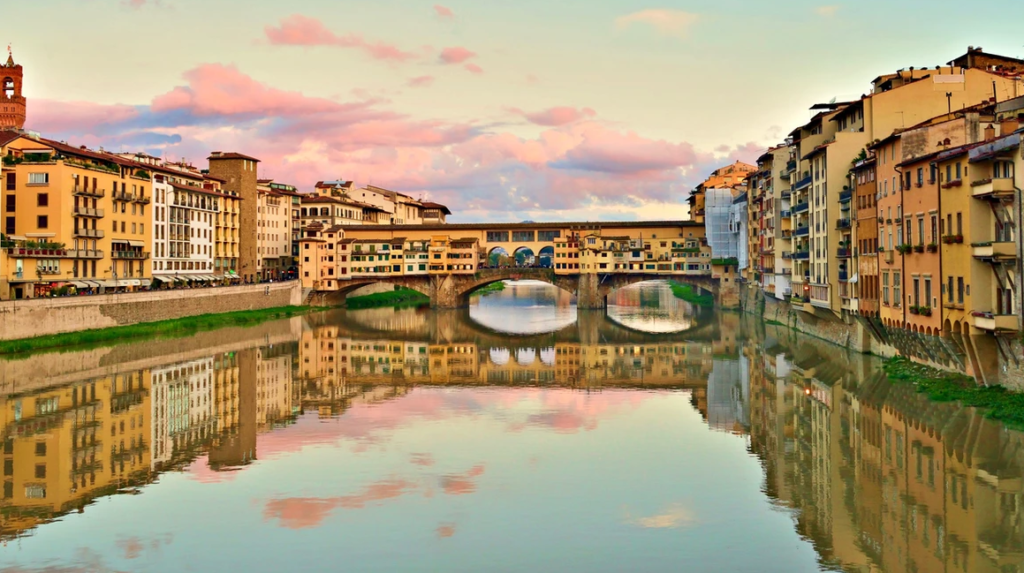
7. Modern Era
Florence escaped mostly intact during WWII. It’s said the Hitler himself ordered Ponte Vecchio to be saved.
Since WWII, Florence and other Tuscan towns have been transformed, with a revitalized wine, fashion, and tourism industry.
In 1966, Florence suffered a great disaster when catastrophic flooding of the Arno damaged precious works of art. The works have been restored as much as possible and measures taken to prevent further damage from flooding.
The vast majority of art created in Florence over the centuries is intact. The sheer quality and quantity of the art is overwhelming. Today, Florence is one of the great artistic capitals in Europe.
I hope you’ve enjoyed my nutshell history of Florence. You may enjoy these other Florence travel guides and resources:
- 1 day itinerary for Florence
- 3 day itinerary for Florence
- Best museums in Florence
- Hidden gems in Florence
- Top Attractions in Florence
- Florence art bucket list
- Best day trips from Florence
- Guide to the Medici Palaces
- Guide to the Uffizi Gallery
- Best viewpoints in Florence
- Best churches in Florence
If you need a nutshell history of Florence, pin it for later.

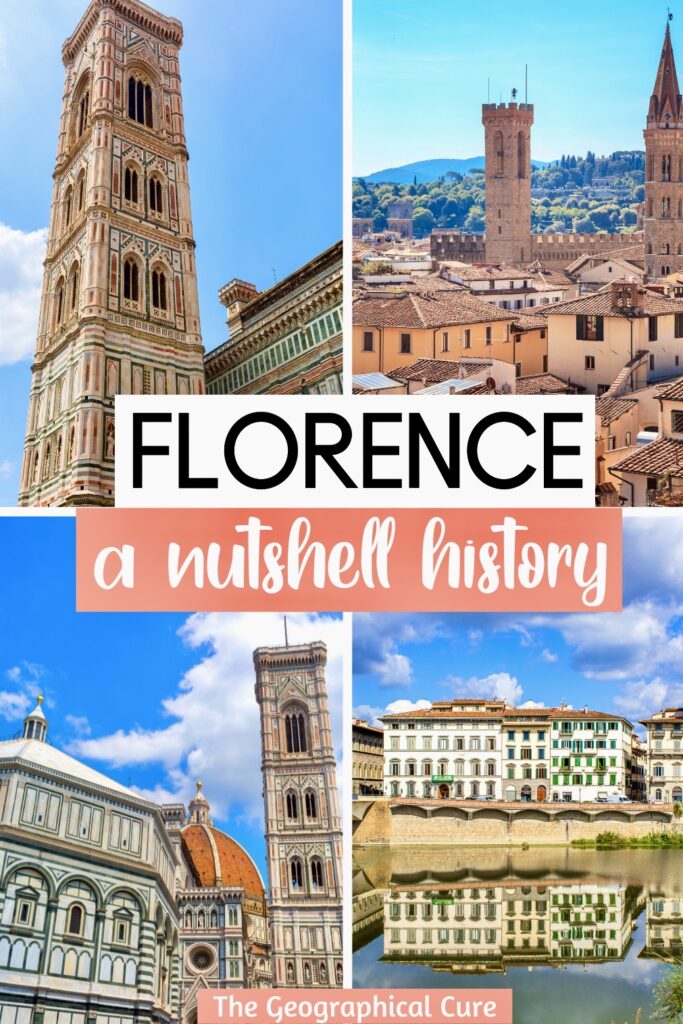
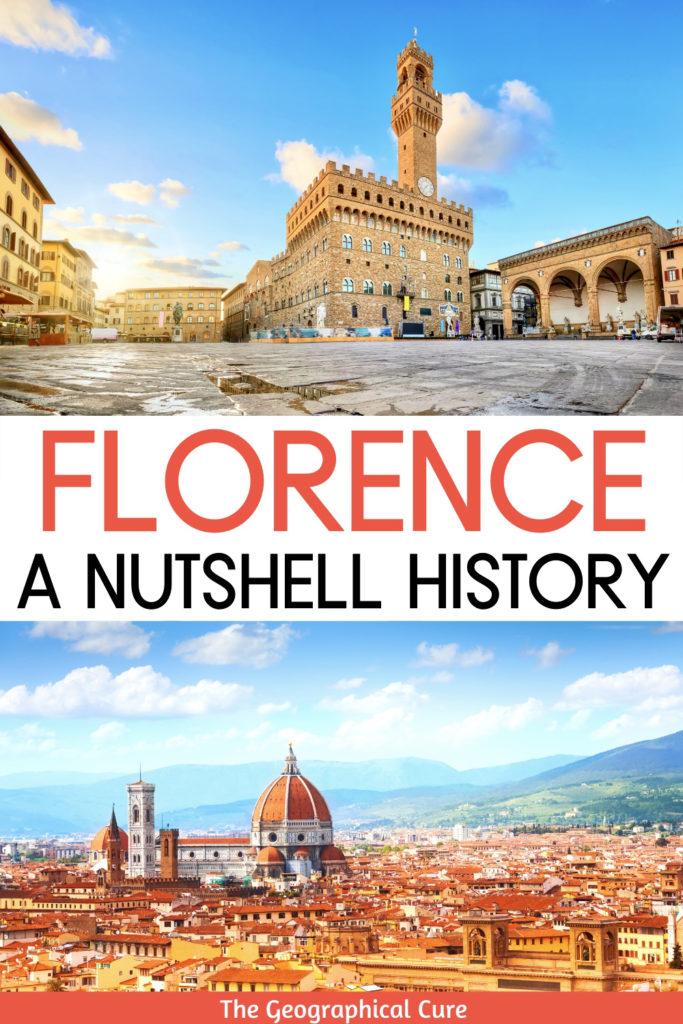
Thank you for this enjoyable and informative brief history.
I will seek out more.
You’re welcome Patrick!
Fascinating. Thanks
You’re welcome David!